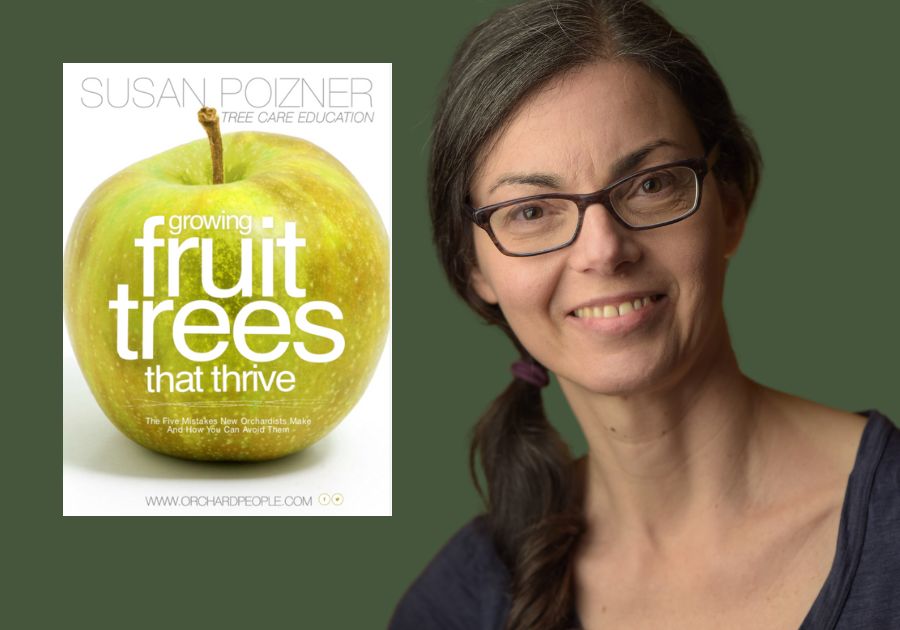
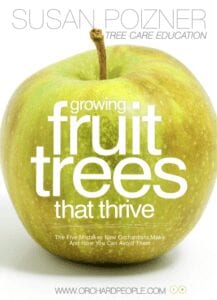
FRUIT TREE CARE NEWSLETTER
Thomas Jefferson’s Monticello: The Roots of American Pomology
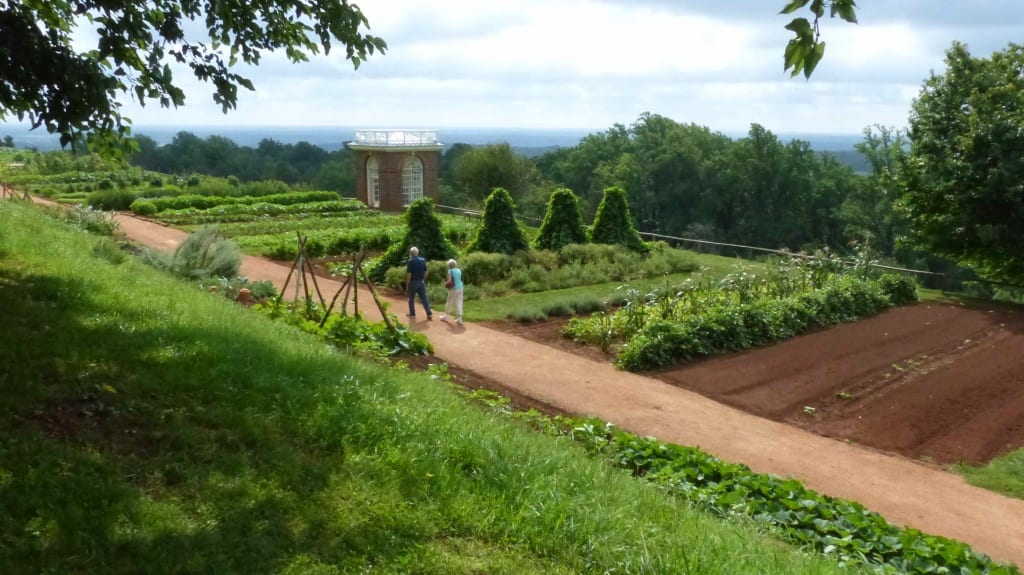
Thomas Jefferson is considered one of the founding fathers of the United States. He was the principal author of the Declaration of Independence, and the third US president. But did you know that he a passionate fruit grower who sought to develop new varieties of apples, peaches, plums, figs, almonds, and pears in the orchards around his home at Monticello?
In fact, Jefferson is considered one of the pioneers of North American pomology. In addition to planting over 170 varieties of temperate fruits at Monticello, he experimented with vegetable seeds, plants, and grapevines. His goal was to prove that America could produce the type of bounty that he had observed during his visits to Europe. Jefferson documented his experiments in detailed horticultural plans that were used to recreate his garden for visitors today.
An autumn visit to Charlottesille, Virginia is a perfect way to explore Jefferson’s story – and the history of American pomology - with a visit to his home and plantation at Monticello. You can also visit incredible local orchards, cideries, and wineries in this fertile part of the United States.

Jefferson's Fruit Growing Dream
One of the first things you’ll notice during a visit to Monticello - Jefferson’s mountain-top home in the centre of what was once his 5000-acre plantation - is the soil. It’s a vivid rust colour and was used to make the red bricks in Jefferson’s stately home. Often, red clay soil is too dense for agricultural purposes. But Monticello’s red soil is loamy and rich in iron, and provided Jefferson with a wonderful canvas for his agricultural experiments.
Jefferson inherited this land from his father in 1764 when he was just 21 years old. He also inherited dozens of slaves. At his young age, he decided to build a neoclassical house of his own design on the mountain. Starting in 1768, his slaves worked to level the top of this 865-foot mountain by hand to prepare to build Jefferson’s new home. Jefferson was 25 at the time. It would take over 40 years until the remarkable house would be complete.
And yet, Jefferson’s priority, even before building his primary residence, was to plant an orchard. His detailed notes show that he planted his first trees in 1767 – a year before work on his home had begun.
“Jefferson’s first gardening act on this little mountain was to begin budding fruit trees on the south slope of the mountain,” explains Peggy Cornett, Monticello’s Curator of Plants.
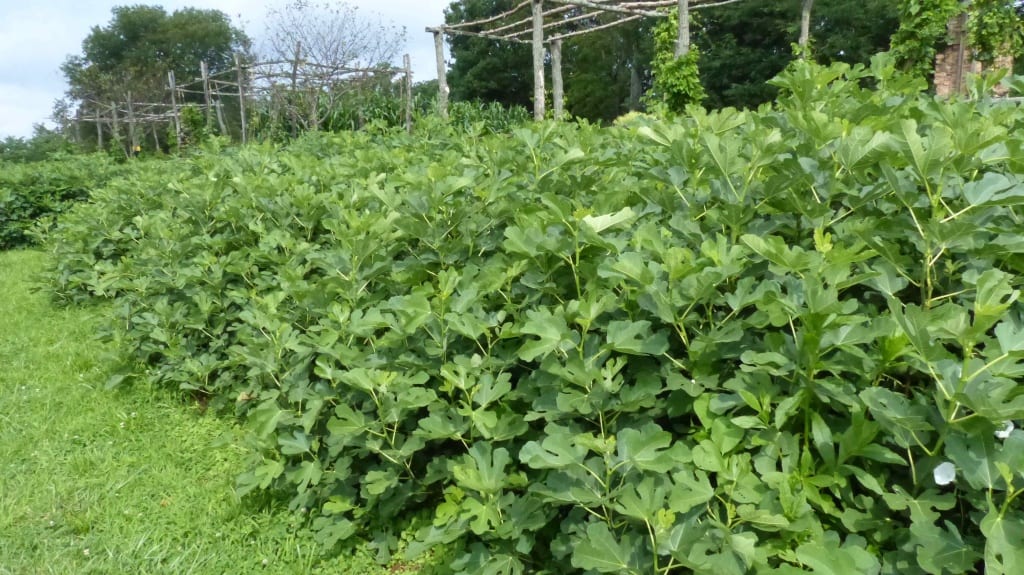
“The Fruitery” at Monticello Takes Root
This first planting was in the South Orchard, which Jefferson called “The Fruitery,” and which would eventually be a showcase for over a hundred varieties of “fancy” fruits. Some varieties were imported from as far away as Italy. Others were renown American introductions such as Lemon Cling peaches, the Newtown Pippin and Esopus Spitzenburg apples, and the highly acclaimed Seckel pear.
Jefferson was a voracious reader and devoured books on horticulture and pomology. He understood that the southern slope of this mountain created a microclimate that could protect his more delicate trees from frost damage. His hope was that the microclimate would allow him to grow tender Mediterranean plants like pomegranates, almonds, and figs that would not otherwise survive in this region.
“I have known frost so severe as to kill the hiccory [sic] trees round about Monticello, and yet not injure the tender fruit blossoms then in bloom on the top and higher parts of the mountain,” Jefferson wrote in his Notes on the State of Virginia in 1780, according to The Fruits and Fruit Trees of Monticello, a book written by Peter J. Hatch, Monticello’s former Director of Gardens and Grounds.
Jefferson would add more and more fruit tree cultivars to the Fruitery over the years. He would also plant rugged cider trees in another orchard on the north side of the mountain. Cider orchards were more common in the region at the time than orchards for fresh and dessert fruits.
“Most early American planters and farmers grew a lot of fruit for beverages, Cornett says. "People drank their fruit more than ate it in Jefferson’s time. They planted cider orchards and grew peaches for brandy, but I think Jefferson’s approach was different because he developed a fine taste for fruits when he lived in France."
Starting in 1982, staff at Monticello have worked hard to recreate Jefferson’s orchards, painstakingly tracking down some of the more unusual varieties he grew. And yet not all of these cultivars have survived. Some have vanished over the past 200 years, because growers have not propagated them. Other trees - like Jefferson’s almond trees - were failed experiments, that simply could not survive in Monticello’s climate.
In addition to exploring Monticello’s orchards, there is so much more to learn on the site. Jefferson had his slaves carve a 1000-foot-long terraced vegetable garden, supported by a massive stone wall, where he grew more than 250 different vegetable varieties. It too has been recreated and each year is planted up with heirloom vegetable seeds. And then there’s the tour of Jefferson’s home, furnished with many of his own belongings, which gives you insight into Jefferson’s character as a scholar and an aspiring inventor.
Tragically, this entire site would never have existed without the use of slave labour, so the “Slavery at Monticello Tour” at Monticello is essential. It helps illustrate the brutal realities of slave life at the time, and exposes the two conflicting sides of Thomas Jefferson. On the one hand, he was an idealist who wrote the Declaration of Independence in 1776, which states that that all men are created equal and are “endowed by their Creator with certain unalienable Rights, that among these are Life, Liberty and the pursuit of Happiness.” At the same time, Jefferson was part of the cruel system in which human beings could be bought and sold like livestock, forced to participate in hard labour for 14 hours a day or more, whipped or even killed for disobedience, and deprived of their freedom.
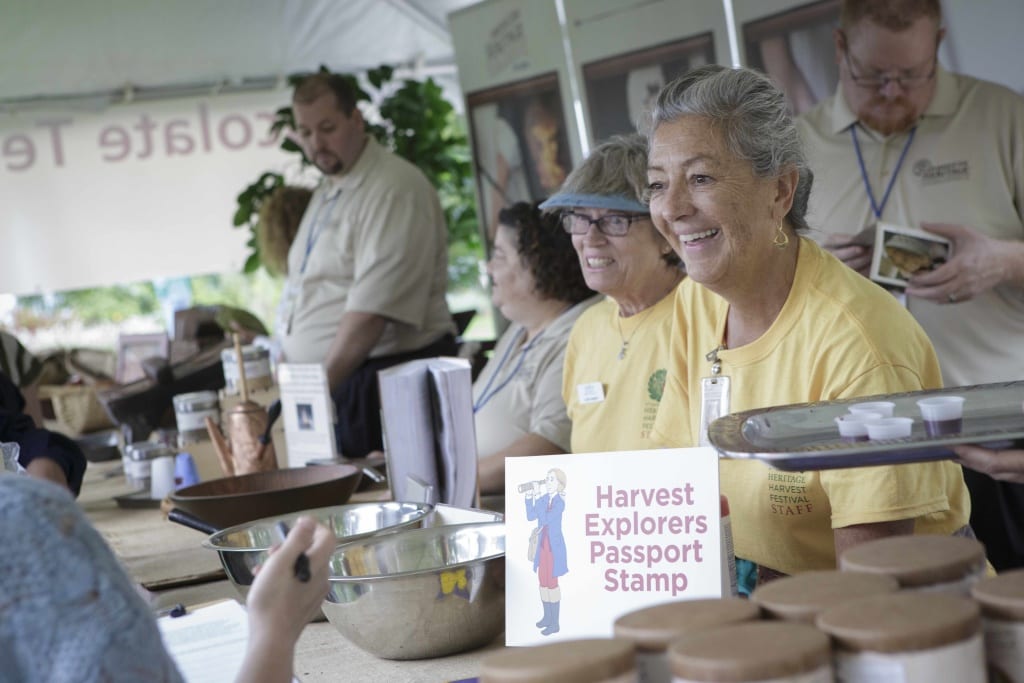
Events at Monticello
In the autumn, there are lots of harvest festivals in and around the Monticello site and other food and farming-based events and festivals can be found on the Charlottesville Albermarle County Tourism website.

An Historic Tradition of Drinking Your Fruit
Jefferson was a curious man and loved agricultural experiments. But he was not a good farmer or businessman. When he died in 1826, he was in debt and his home and property – including most of his slaves – were sold off. But the tradition of growing diverse varieties of fruit continues to thrive in this part of Virginia, as evidenced in a wonderful visit to the Albermarle Ciderworks, just a few minutes' drive from Monticello.
Far too often when you walk through an orchard, you’ll see a huge monoculture with row upon row of genetically identical trees producing genetically identical fruit. Orchardists do this for a reason. Different fruit varieties have different needs when it comes to spraying to prevent pests and disease. And yet the Albermarle Ciderworks orchard began as a private fruit tree collection with over 200 types of apple and other fruit trees planted within a small space.
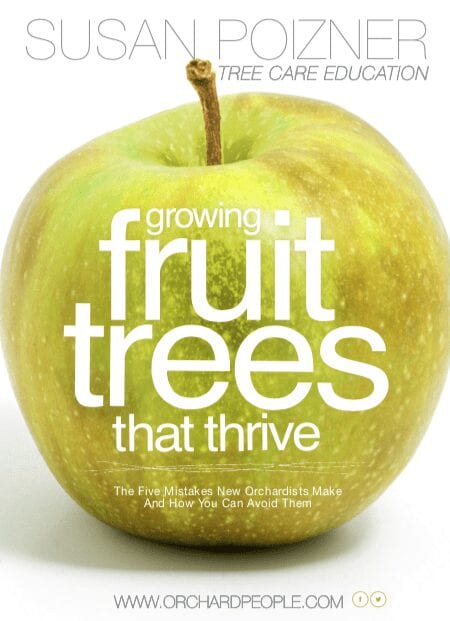
A stroll through the orchard in the autumn is an odyssey in fruit tree varieties. You can find Arkansas black apples with their dark purple skin just a skip and a hop from a red/green Baldwin. Or a Golden Russet may be planted just steps from a Hewes crab.
Today, this large orchard encompasses thousands of fruit trees, and the cidery produces 11 different types of hard cider. Some are made of a single variety of apple like Goldrush, or Arkansas Black. Other ciders are made of a unique blend. Their “Pomme Mary” cider is a sweet blend of Albermarle Pippin and Goldrush, while “Jupiter’s Legacy” is a dry blend of over 20 varieties including both crab and cider apples.

On this site, the staff also grafts and sells fruit tree whips under the name “Vintage Virginia Apples.” This is a great destination for cider tastings, live music events, and their annual “Vintage Virginia Apples Harvest Festival” (taking place on November 7, 2015).

Where to Stay – and What to Eat!
In Jefferson’s day, his stately home accommodated dozens of people including his children and grandchildren. He also often hosted guests from other parts of the country – some of his guests would visit for up to five weeks in a guest bedroom on the main floor. Sadly, staying on the site nowadays is not possible, but there are plenty of other options if you are looking for accommodations nearby.
One option is to book a room at The Inn at Monticello, a local B&B surrounded by beautifully kept gardens. It's furnished with a mix of colonial and Victorian styles. The proprietors, Carolyn Patterson and Bob Goss, have hundreds of visitors each year from around the world - as far away as Nepal and South Africa - to explore the history, culture and food of the area, or to enjoy the myriad festivals that take place in the region during the autumn months.
Carolyn and Bob think of Jefferson as “America’s first foodie,” and so it’s no surprise that the area today is a locavore’s paradise. There are farmers markets four or five times a week, over 30 wineries to visit, many orchards, and fine dining destinations that specialize in local produce.
For instance, a few minutes' drive from their B&B is the Carter Orchard. Like Thomas Jefferson’s Fruitery, it’s an orchard planted on the top of a mountain, and it has breathtaking views. Here you can buy ten different types of fruit or even pick your own. There is live music on Thursday evenings. In fact, Carter Orchard is where Bob and Carolyn shop, and they use the bounty to make delicious breakfasts and evening treats for their guests.
“So far this year we have made peach jam, mulberry jam, and strawberry jam that we serve our guests with their breakfast,” Carolyn says. “In the apple season I make apple butter, pies, crisps and cobblers that we serve with ice cream."
There is a lot to see in this region. You can stroll through historic Charlottesville and enjoy the outdoor pedestrian mall with its shops and restaurants, and visit historic buildings and estates. You can drive through Shenandoah National Park and take in the breathtaking views of the Skyline Drive, which runs along the crest of the Blue Ridge Mountains. But for so many visitors, the initial attraction is to learn about the complex man and American founding father, Thomas Jefferson.
Carolyn Patterson of the Inn at Monticello sums it up so well: “For people who are fans of history or democracy, or the origins of America, or the origins of gardening, or the origins of viticulture, for wine growing. There are so many reasons to come to Monticello because Thomas Jefferson was a part of the beginning of all those things."
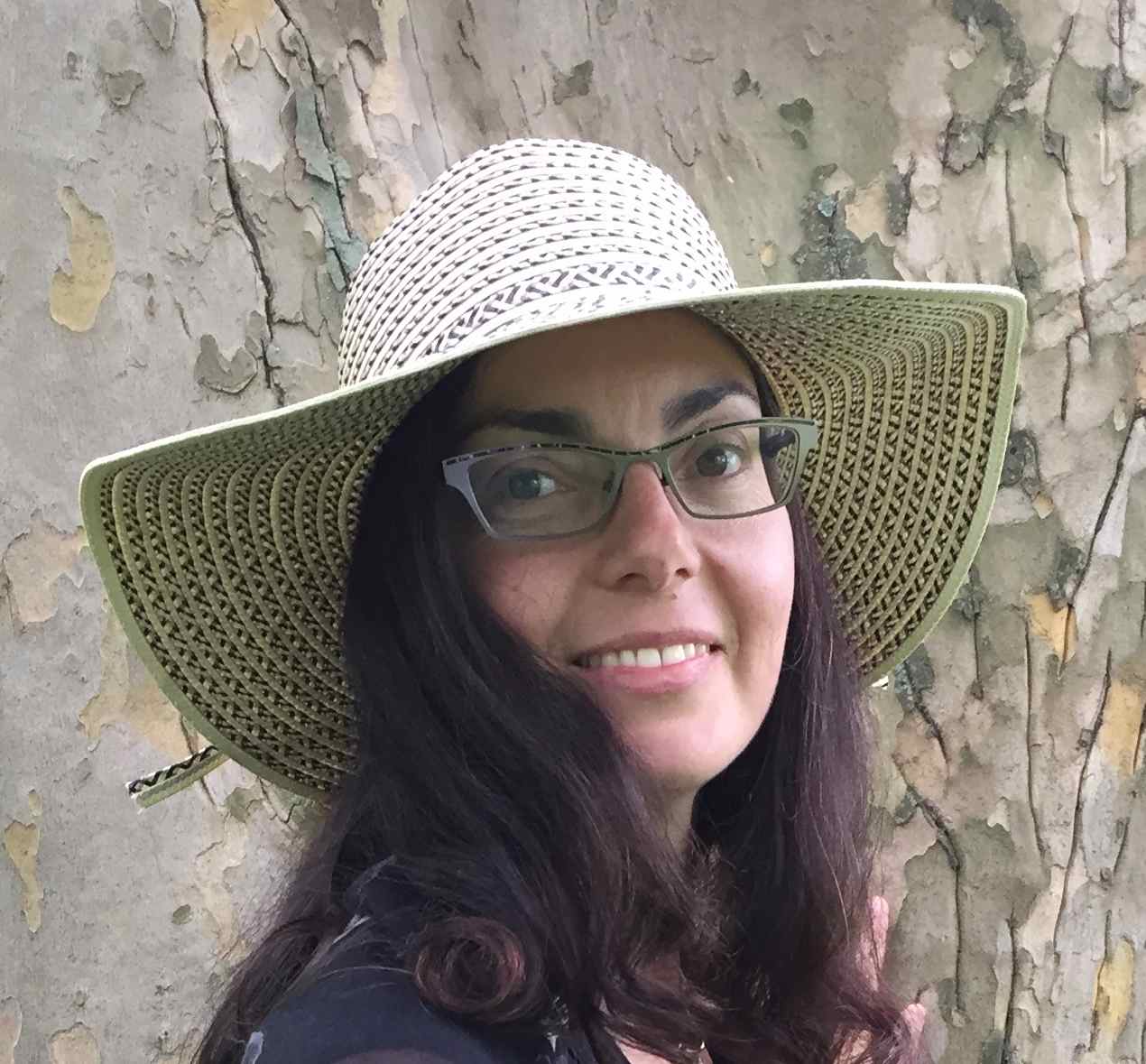
Susan Poizner
Susan Poizner is an urban orchardist in Toronto, Canada and the author of three books on fruit tree care including Grow Fruit Trees Fast, Growing Urban Orchards, and Fruit Tree Grafting for Everyone. Susan trains new growers worldwide through her award-winning fruit tree care training program at Orchardpeople.com. Susan is also the host of the Orchard People radio show and podcast and is an ISA Certified Arborist.

